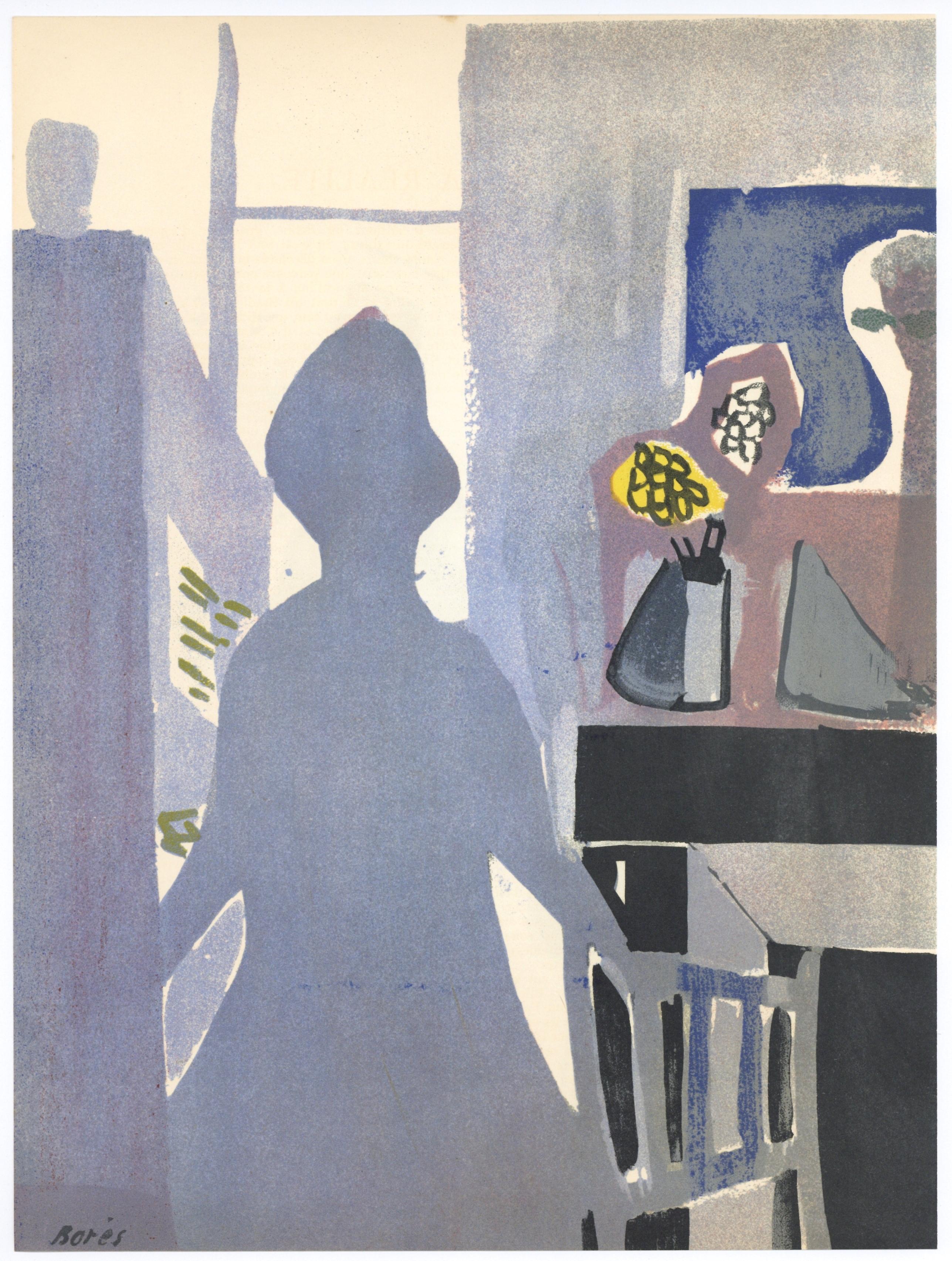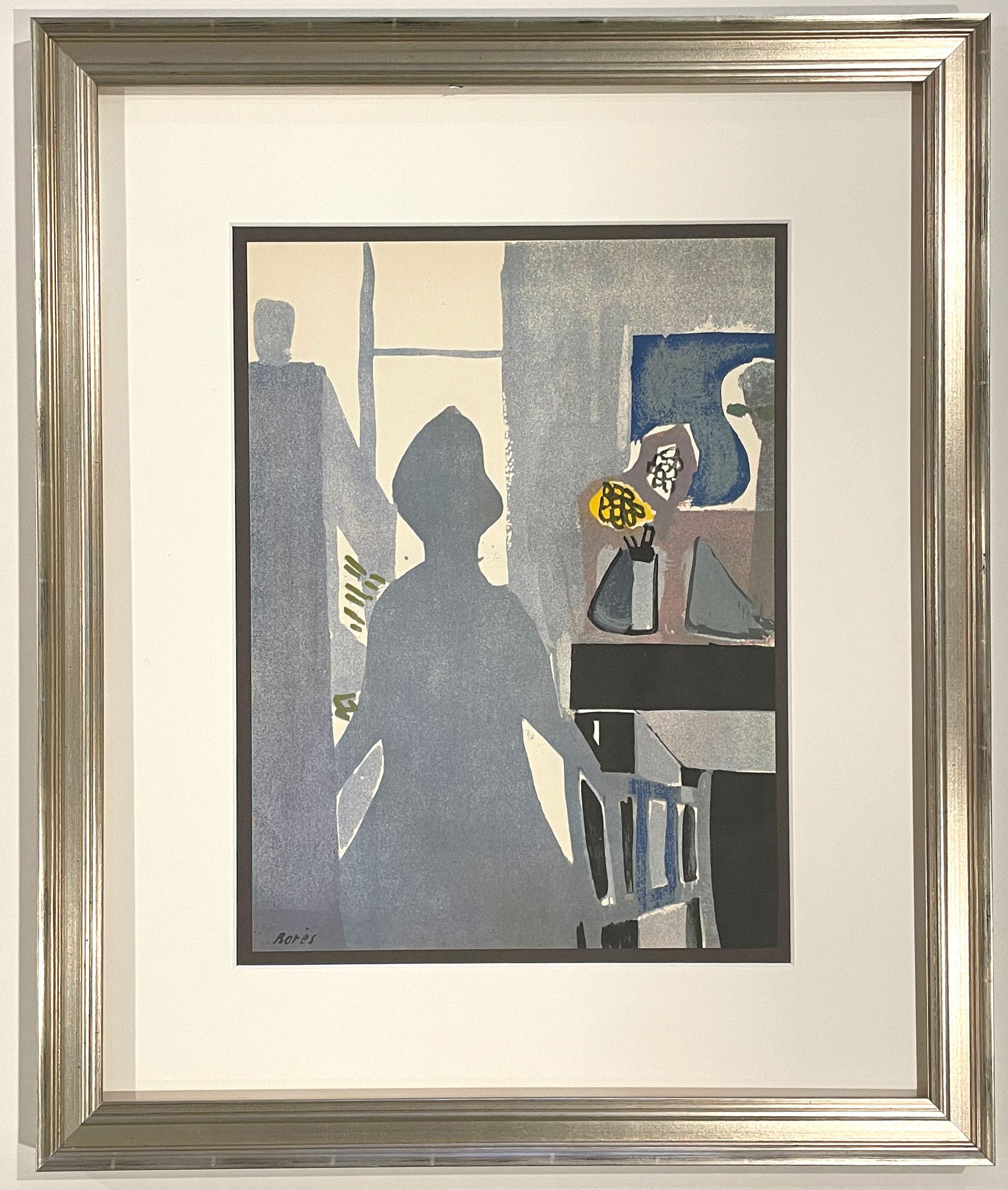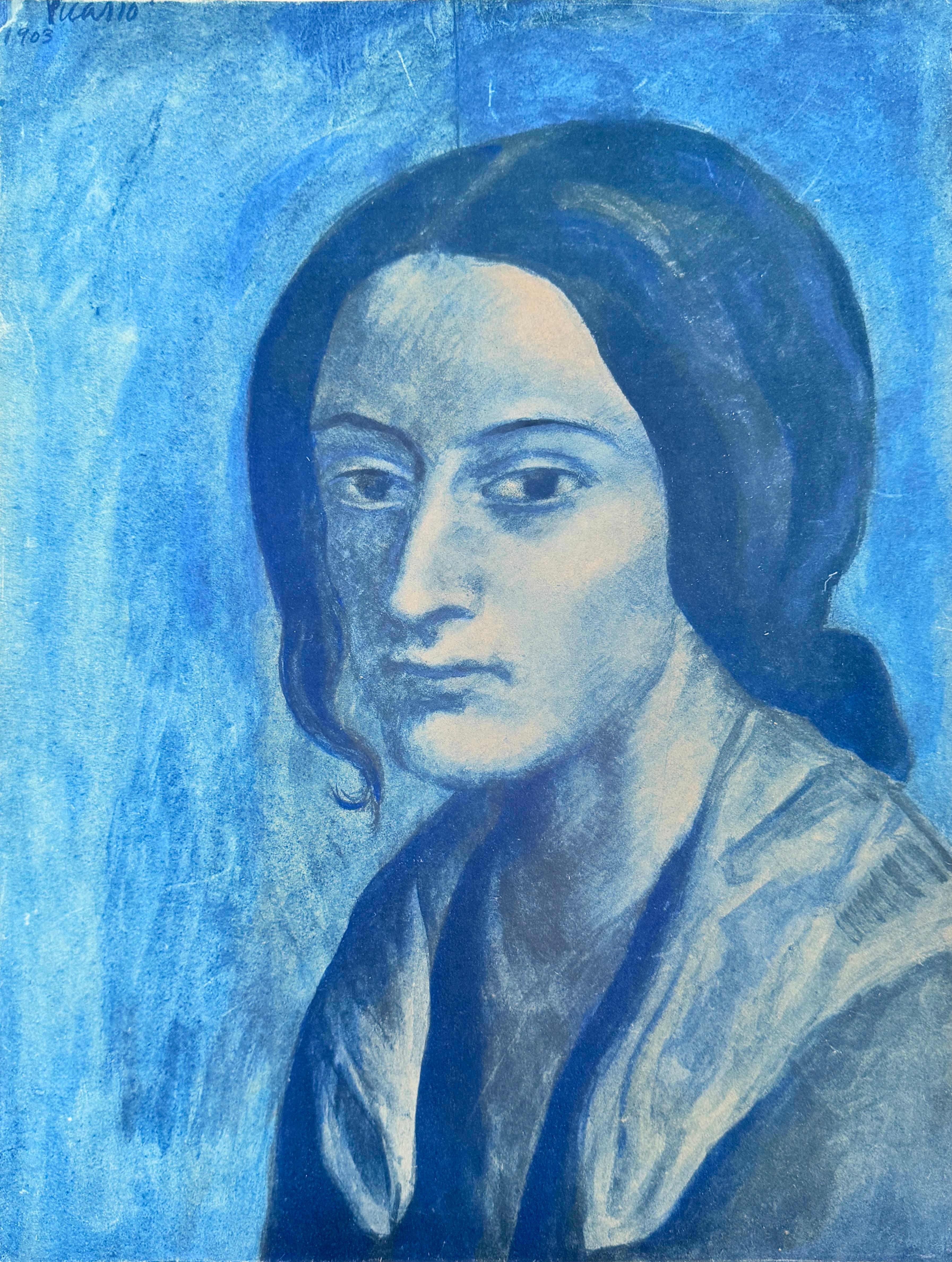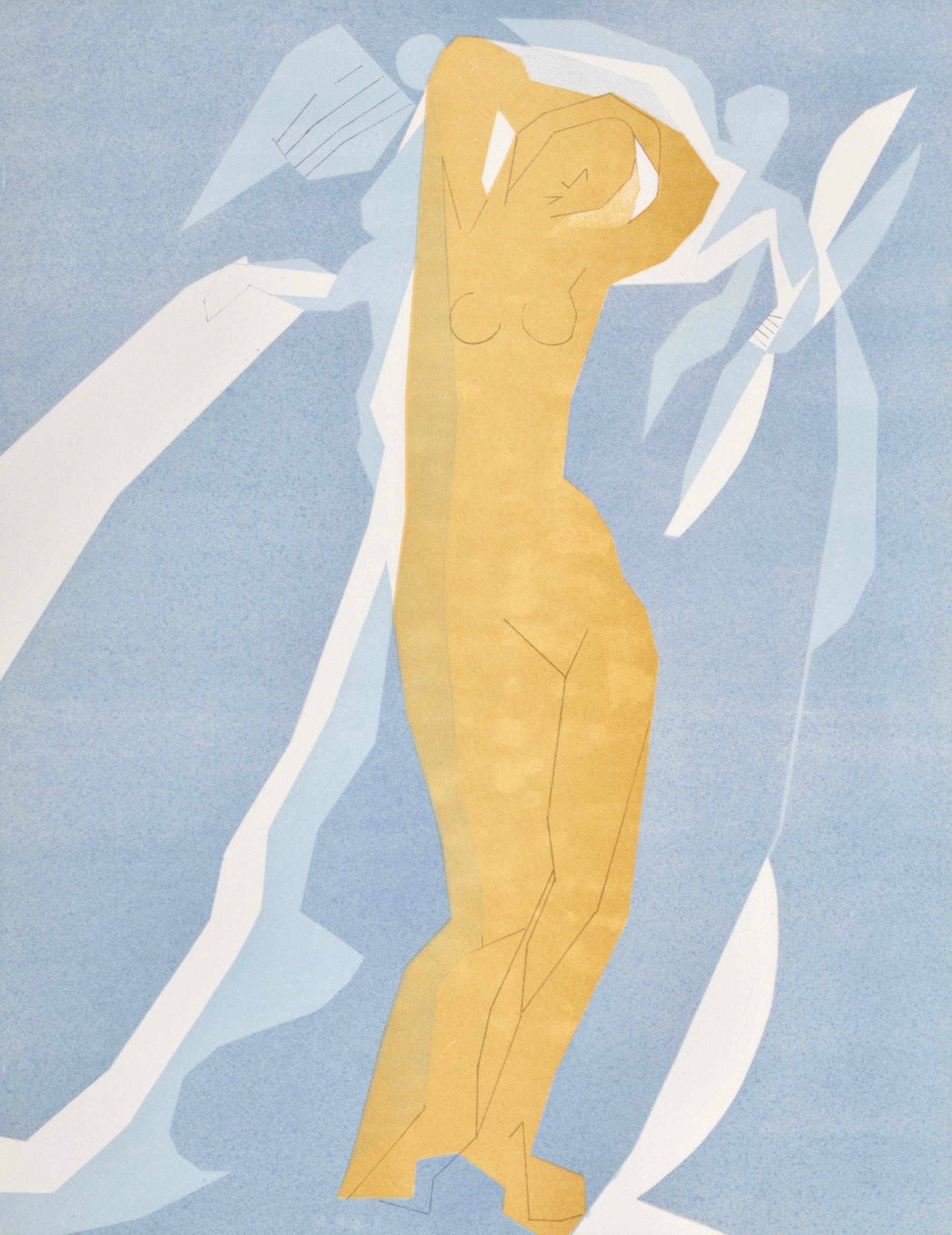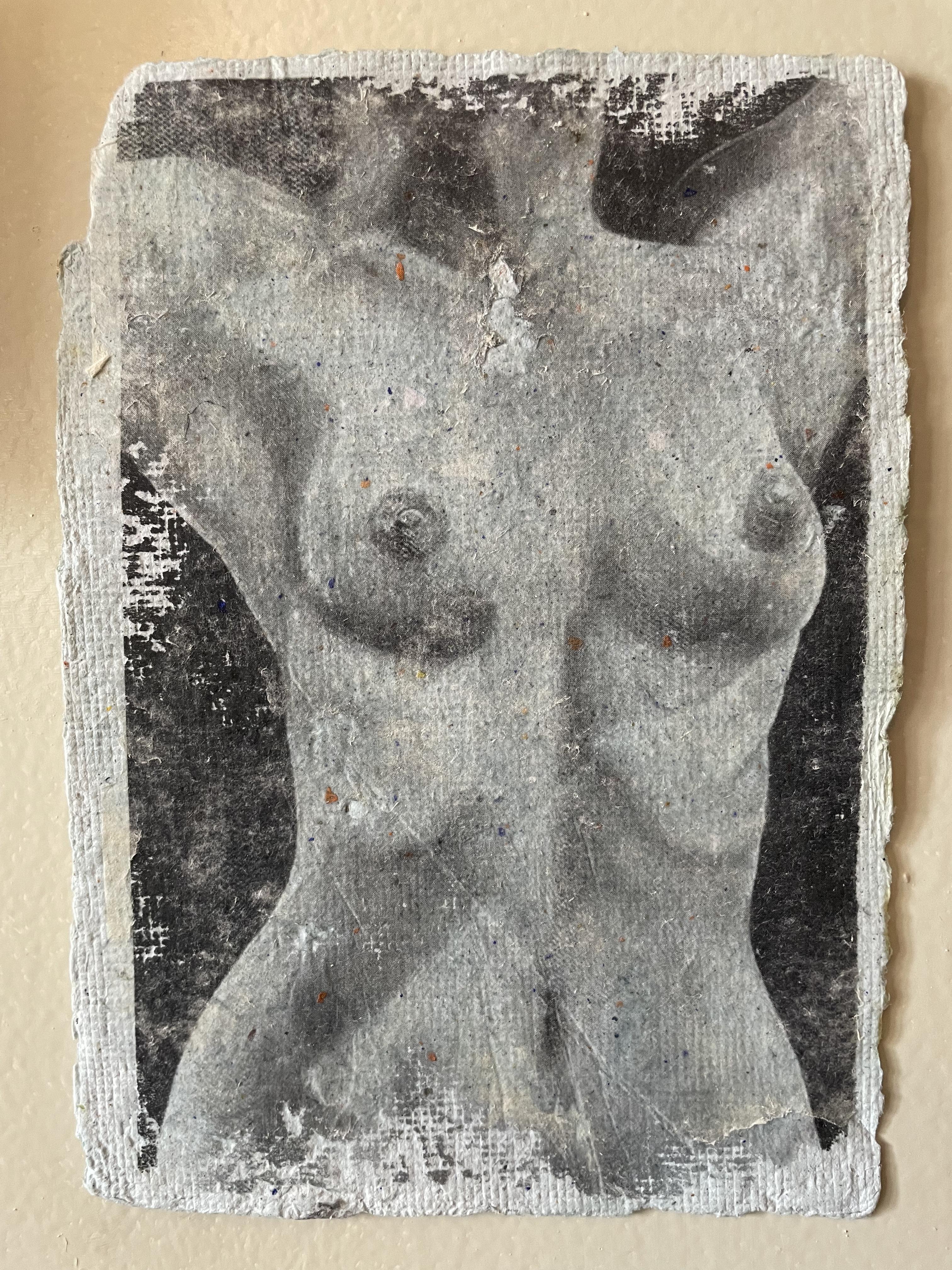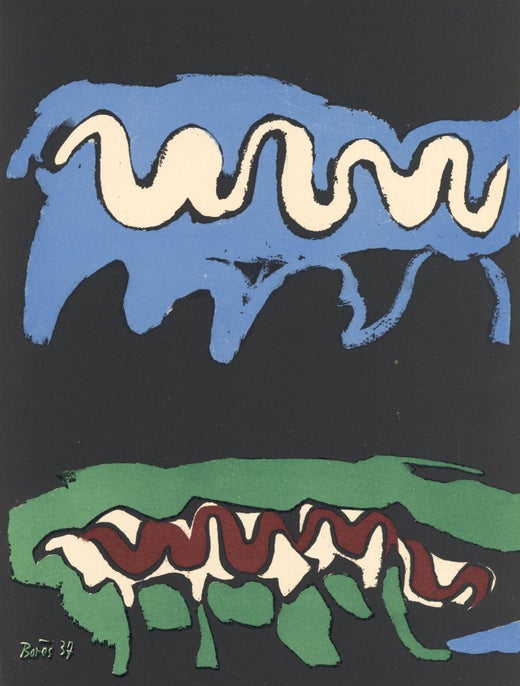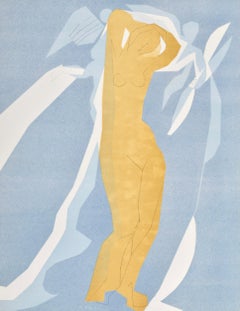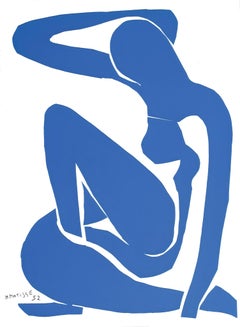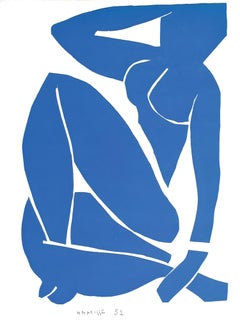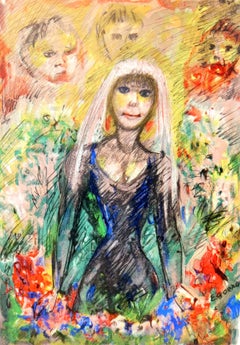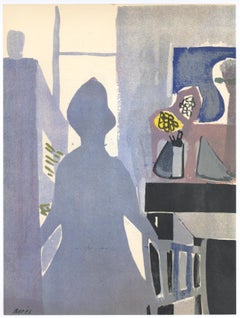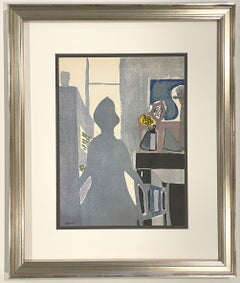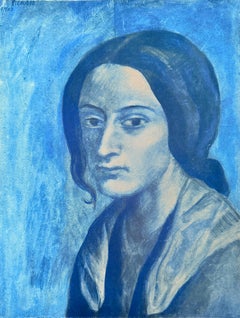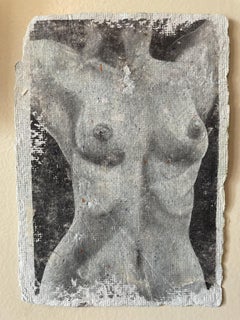Artículos similares a La Femme en Bleu, Verve: Revue Artistique et Littéraire
¿Quieres más imágenes o vídeos?
Solicita imágenes o vídeos adicionales al vendedor
1 de 11
Francisco BoresLa Femme en Bleu, Verve: Revue Artistique et Littéraire1953
1953
639,32 €
799,15 €Descuento del 20 %
Acerca del artículo
Litografía sobre papel vélin des Papeteries du Marais. Tamaño del papel: 14 x 10,25 pulgadas. Inscripción: Firmada en la plancha y sin numerar, tal como se emitió. Notas: Del álbum Verve: Revue Artistique et Littéraire, Vol. VII, N° 27-28, 1953. Publicado por Éditions de la revue Verve, París, bajo la dirección de Tériade, éditeur, París; impreso por Mourlot Frères, París, 15 de enero de 1953, en una edición de MM. Extracto del álbum (traducido del francés), Este número doble de Verve se terminó de imprimir el 15 de enero de 1953 por Draeger para la tipografía y el huecograbado y por Mourlot para la litografía. Notas adicionales: Extraído de Poppy Sfakianaki, 'La revue Verve (1937-60): Un tremplin pour la carrière de Tériade dans les éditions d'art', Journal of European Periodical Studies, 4.2 (Invierno 2019), 70-89, En 1937, Tériade (1897-1983) conoció a David Smart (1892-1952), editor estadounidense de la revista Esquire, quien le ofreció la oportunidad de colaborar en la creación de "la revista más bella del mundo". Smart reconoció en Tériade no sólo su capacidad como editor y sus conocimientos de historia del arte, sino también su red profesional y el nombre que se había hecho en el mundo del arte parisino, ventajas cruciales para una empresa editorial. Con la convicción comercial de que la belleza "vende", Smart pretendía dirigirse al público estadounidense, atraído por el arte francés, incluido el moderno, y por el mito de la vida artística en París. Por su parte, Tériade vio en la propuesta de colaboración una oportunidad para introducirse en el mercado estadounidense, poderoso aliado del arte moderno en Francia. Éditions de la Revue Verve se fundó en noviembre de 1937, financiada en gran parte por Smart y dirigida por Tériade. Verve: Revue Artistique et Littéraire fue una lujosa y ambiciosa publicación de arte, editada no sólo en francés, sino también en inglés en sus primeros años, y distribuida en Europa y Estados Unidos. Su configuración recordaba a la de las revistas de arte francesas Cahiers d'art, Minotaure y Arts et métiers graphiques, así como a la de la revista de arte estadounidense Coronet. Sin embargo, Verve era superior a la competencia por su abundante iconografía y su alta calidad de impresión. Su precio oscilaba entre 60 y 150 francos (para los números dobles) antes de la guerra, y entre 120 y 350 francos durante la guerra. Dado su elevado precio, la revista se dirigía principalmente a marchantes de arte, coleccionistas, bibliófilos y amantes del arte adinerados. La exquisita estética de la revista se debía a su redactor jefe, Tériade, que pretendía desarrollar una plataforma de diálogo entre la imagen y el texto, las artes visuales y la literatura. El factor dominante de cada número sigue siendo su iconografía, compuesta por reproducciones de obras de artistas modernos que Tériade admiraba, y "maestros", principalmente de la tradición francesa, junto a fotos y miniaturas de manuscritos medievales. Tériade realizó sin duda con su revista una idea expresada en 1934 según la cual los libros servían de "museo ideal" o de exposición en la que se reunían todas las obras maestras artísticas, que Malraux desarrolló más tarde en Le Musée imaginaire (Ginebra: Skira, 1947), partes del cual aparecerán en Verve. Durante la Segunda Guerra Mundial cambió la periodicidad de la revista, que pasó a ser irregular, y la naturaleza menos variada de los temas tratados. Así, los números publicados durante la Guerra (así como en 1945 y 1946) se dedicaron exclusivamente a la reproducción de iluminaciones medievales. Por último, los números especiales del periodo de posguerra presentan cada uno la producción reciente de un pintor de arte moderno. Sólo los números 8 (1940) y 27-28 (1952) fueron una excepción con un resumen más variado. La acogida de Verve fue positiva, como demuestran varios artículos de prensa elogiosos a lo largo de su carrera. El éxito de la revista, la pasión de Tériade por el arte moderno y los manuscritos medievales, su admiración por las publicaciones de Ambroise Vollard y Albert Skira, y su conocimiento del mundo de los bibliófilos, pronto le llevaron a ampliar su actividad editorial. En 1943, a pesar de las dificultades prácticas impuestas por la guerra, se publicó su primer libro de artista, escrito e ilustrado por Georges Rouault. Hasta 1975, Tériade publicó Éditions de la Revue Verve, nueve libros de artistas modernos, como Henri Matisse, Pablo Picasso, Marc Chagall, Joan Miró, compuestos íntegramente (texto e imágenes) por los artistas; diecisiete libros ilustrados por artistas modernos reconocidos; un álbum de litografías de Fernand Léger sobre París; dos álbumes fotográficos de Henri Cartier-Bresson; dos monografías sobre los artistas André Beaudin y Francisco Borès; una lujosa serie de reproducciones de iluminaciones medievales; y, una serie de carpetas sobre la gran arquitectura francesa. En definitiva, el estudio comparativo de la revista y las ediciones de Verve: Revue Artistique et Littéraire ilustra la importancia de la dinámica relacional tácita que resulta de las relaciones de colaboración e intercambio de capital simbólico basadas en percepciones e intereses comunes, así como en sentimientos de amistad y aprecio mutuos de actores del mundo del arte que comparten una cultura visual y bibliófila y contribuyen así al éxito de la revista y de la editorial.
FRANCISCO BORES (1898-1972) fue una figura importante del arte europeo del siglo XX. Su presencia fue importante entre la segunda oleada de artistas españoles que llegaron a París en la década de 1920, entre los que también se encontraban Pablo Picasso, Ginés Parra, Pedro Flores, Antoni Clavé; aunque en su propio país no fue realmente reconocido hasta bien entrada la década de 1970, cuando finalmente se valoraron aspectos de su obra que no encajaban con el informalismo y el realismo social dominantes. El estilo de Bores se forjó tras su estrecho contacto con los más grandes pintores de la primera Vanguardia: Pablo Picasso y Henri Matisse. Admiraba su manera de construir las formas, el clasicismo y, más tarde, la explosión cubista. Bores armoniza estas influencias en su obra, y va más allá de ellas. Sus obras se exponen en el Museo de Arte Contemporáneo de Madrid.
- Creador:Francisco Bores (1989 - 1972, Español)
- Año de creación:1953
- Dimensiones:Altura: 35,56 cm (14 in)Anchura: 26,04 cm (10,25 in)
- Medio:
- Movimiento y estilo:
- Época:
- Estado:
- Ubicación de la galería:Southampton, NY
- Número de referencia:1stDibs: LU1465216383682
Francisco Bores
Francisco Bores López (Madrid, 5 de mayo de 1898 - París, 10 de mayo de 1972) fue un pintor español de la llamada Nueva Escuela de París. Su formación artística se originó tanto en la academia de pintura de Cecilio Pla, donde conoció a Pancho Cossío, Manuel Ángeles Ortiz o Joaquín Peinado, como en las tertulias literarias madrileñas relacionadas con el ultraísmo. En esta época realizó grabados y xilografías para un gran número de revistas como Horizonte, Cruz y Raya, Index, Revista de Occidente. En 1922 participó en la Exposición Nacional de Bellas Artes. En 1925 participó en la primera exposición de la Sociedad de Artistas Ibéricos. El escaso éxito de esta exposición le empuja a ir a París. En esta ciudad compartió estudio con el pintor español Pancho Cossío y también conoció a Picasso y a Juan Gris. En 1927 celebró su primera exposición individual en París. A partir de este momento, Bores se integra en el ambiente artístico parisino donde vivirá prácticamente toda su vida. En 1928, su primera exposición en una galería de Estados Unidos, en 1930 expuso de nuevo, dentro de una exposición colectiva en el Museo de Arte Moderno de Nueva York. En los años siguientes, siguió exponiendo en distintas galerías de París, como la Galería Georges Petit, la Galería Bernheim y la Galería Vavin Raspail. También participa en varias exposiciones colectivas, destacando la Exposición de Arte Español Contemporáneo en el Museo Jeu de Paume de París, también ilustra libros y revistas de arte como Minotauro. Contratos con las Galerías Zwemmer de Londres y Galerie Simon de París. Exposiciones en Estados Unidos, en la Galería Buchholz de Nueva York. Pasó la Segunda Guerra Mundial en San Juan de Luz, donde reanudó su amistad con Matisse. En 1947 el Estado francés adquirió, por primera vez, una obra de Bores; en 1949 fue el Museo de Arte Moderno de Nueva York el que adquirió sus cuadros. Su actividad expositiva se reanuda en toda Europa: Francia, Alemania, Dinamarca, Italia. Destaca su inclusión entre los pintores de la Galería Louis Carré, una de las más prestigiosas de París, y por tanto del mundo, en aquellos años (1954). Continúa, esporádicamente, ilustrando libros (cinco linograbados "El grito por la muerte de Ignacio Sánchez Mejías" de Federico García Lorca, litografías para ilustrar las obras completas de Albert Camus publicadas por la Imprimerie nationale francesa en 1962). En 1969, expuso en la Galería Theo de Madrid lo que representaba su acercamiento al público español, que prácticamente desconocía su obra salvo en los círculos profesionales donde, por otra parte, era muy apreciada. En 1971 volvió a exponer en esta misma Galería Theo, falleciendo en París en 1972. En la obra de Bores, el crítico Joaquín de la Puente señala varios periodos: Clasicismo renovado (1923-1925)
Neo cubismo (1925-1929)
Pintura-Fruta (1929-1933)
Escenas interiores (1934-1949)
Estilo en blanco (1949-1969)
Sobre el vendedor
4,9
Vendedor Platino
Vendedores premium con una calificación de +4,7 y tiempos de respuesta de 24 horas
Establecido en 1978
Vendedor de 1stDibs desde 2021
1157 ventas en 1stDibs
Tiempo de respuesta usual: <1 hora
- EnvíoRecuperando presupuesto…Envío desde: Southampton, NY
- Política de devolución
Partes de esta página se han traducido automáticamente. 1stDibs no puede garantizar la exactitud de las traducciones. El inglés es el idioma predeterminado de este sitio web.
Garantía de autenticidad
En el improbable caso de que haya algún problema con la autenticidad de un artículo, ponte en contacto con nosotros en un plazo de 1 año para recibir un reembolso total. DetallesGarantía de devolución de dinero
Si tu artículo no es como se describe, sufre daños durante el transporte o no llega, ponte en contacto con nosotros en un plazo de 7 días para recibir un reembolso total. DetallesCancelación dentro de las 24 horas
Tienes un período de gracia de 24 horas para reconsiderar tu compra, sin preguntas.Vendedores profesionales aprobados
Nuestros vendedores de primera clase deben cumplir estrictos estándares de servicio para mantener la integridad de nuestros anuncios.Garantía de igualación de precios
Si encuentras que un vendedor publicó el mismo artículo por un precio menor en otro lado, igualaremos ese precio.Entrega global de confianza
Nuestra red de transporte de primera ofrece opciones de envío especializado en todo el mundo, que incluye envío personalizado.Más de este vendedor
Ver todoNu de femme en jaune et bleu, Miradas sobre París, André Beaudin
Por Andre Beaudin
Litografía sobre papel vélin d'Arches. Inscripción: sin firmar y sin numerar, tal como se emitió. Buen estado. Notas: del folio, Regards sur Paris, 1963. Publicado por André Sauret, ...
Categoría
Década de 1960, Moderno, Impresiones de paisajes
Materiales
Litografía
925 € Precio de venta
Descuento del 20 %
Envío gratuito
Matisse, Nu Bleu VI (Duthuit 139), Verve: Revue Artistique (después)
Por Henri Matisse
Litografía sobre papel vélin du Marais. Inscripción: Sin firmar y sin numerar, tal como se emitió. Buen estado. Notas: Del volumen Verve: Revue Artistique et Littéraire, Vol. IX, N° ...
Categoría
Década de 1950, Moderno, Impresiones de paisajes
Materiales
Litografía
1282 € Precio de venta
Descuento del 20 %
Envío gratuito
Matisse, Nu Bleu IX (Duthuit 139), Verve: Revue Artistique (después)
Por Henri Matisse
Litografía sobre papel vélin du Marais. Inscripción: Sin firmar y sin numerar, tal como se emitió. Buen estado. Notas: Del volumen Verve: Revue Artistique et Littéraire, Vol. IX, N° ...
Categoría
Década de 1950, Moderno, Impresiones de paisajes
Materiales
Litografía
La mariée, Vingt fables de La fontaine, Edouard Goerg
Por Edouard Goerg
Xilografía sobre papel vélin d'Arches. Inscripción: firmada en la plancha y sin numerar, tal como se emitió. Buen estado. Notas: del folio, Vingt fables de La fontaine, 1961. Publica...
Categoría
Década de 1960, Moderno, Impresiones de paisajes
Materiales
Grabado en madera
639 € Precio de venta
Descuento del 20 %
Envío gratuito
Matisse, Nu Bleu VII (Duthuit 139), Verve: Revue Artistique (después)
Por Henri Matisse
Litografía sobre papel vélin du Marais. Inscripción: Sin firmar y sin numerar, tal como se emitió. Buen estado. Notas: Del volumen Verve: Revue Artistique et Littéraire, Vol. IX, N° ...
Categoría
Década de 1950, Moderno, Impresiones de paisajes
Materiales
Litografía
853 € Precio de venta
Descuento del 20 %
Envío gratuito
Matisse, Nu Bleu I (Duthuit 139), Verve: Revue Artistique (después)
Por Henri Matisse
Litografía sobre papel vélin du Marais. Inscripción: Sin firmar y sin numerar, tal como se emitió. Buen estado. Notas: Del volumen Verve: Revue Artistique et Littéraire, Vol. IX, N° ...
Categoría
Década de 1950, Moderno, Impresiones de paisajes
Materiales
Litografía
853 € Precio de venta
Descuento del 20 %
Envío gratuito
También te puede gustar
"La femme en bleu" litografía original
Por Francisco Bores
Medio: Litografía original. De la rara edición de Verve (Volumen 7, Número 27-28), publicada en París por Teriade en 1952 e impresa por Mourlot. Tamaño: 353 x 264 mm (14 x 10 3/8 pul...
Categoría
Década de 1950, Impresiones y múltiplos
Materiales
Litografía
La Femme En Bleu
Por Francisco Bores
Artista: Francisco Bores
Medio: Litografía
Título: La Femme En Bleu
Portafolio: Verve Vol VII nº 27-28
Año: 1952
Edición: 6000
Firmada: Firmado en la placa
Enmarcado Tamaño: 22" x 18...
Categoría
Década de 1950, Impresiones figurativas
Materiales
Litografía
Portrait mélancolique d'une femme en bleu
Por Pablo Picasso
Pablo Picasso (1881-1973) - Retrato melancólico de una mujer azul
Pochoir de 1961.
La edición: 442/500 escrita a lápiz.
Dimensiones de la obra: 53,8 x 41,5 cm
Editorial: Au Vent ...
Categoría
Década de 1960, Moderno, Impresiones figurativas
Materiales
Estarcido
Mujer en azul
Brittany Noriega
Mujer en azul
Impresión por transferencia láser sobre papel hecho a mano
Año: 2021
Tamaño: 8,5x6 pulg.
Firmado a mano
COA proporcionado
Ref.: 924802-1654
Etiquetas:...
Categoría
2.º década del siglo XXI, Moderno, Impresiones y múltiplos
Materiales
Papel hecho a mano, Láser
168 € Precio de venta
Descuento del 40 %
Dama En Azul
Por Kismine Varner
Vibrante grabado de mujer sobre fondo azul de la artista estadounidense Kismine Varner, hacia 1990. Firmado abajo a la derecha.
Obra de arte original sobre papel expuesta en un t...
Categoría
Década de 1990, Impresiones de retratos
Materiales
Grabado químico
Femme a la Collerette Bleue
Por Pablo Picasso
Visto desde un ángulo, el grabado de Pablo Picasso de esta mujer muestra su versatilidad como artista. Sobre un fondo de color ciruela oscuro, el modelo anguloso está representado co...
Categoría
finales del siglo XX, Cubista, Impresiones abstractas
Materiales
Litografía
